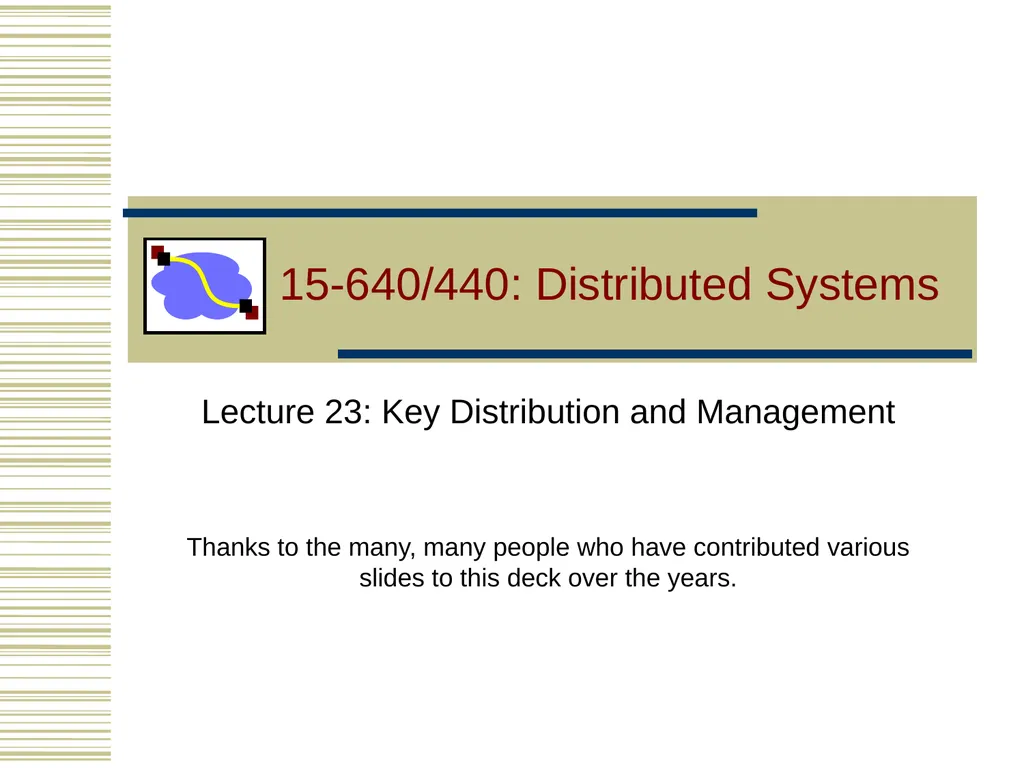
15-640/440: Distributed Systems Lecture 23: Key
Author: luanne-stotts | Published: 2025-05-29
Description: 15-640440: Distributed Systems Lecture 23: Key Distribution and Management Thanks to the many, many people who have contributed various slides to this deck over the years. 2 Key Distribution Have network with n entities Add one more Must
Download Presentation
Download the PPT/PDF: Download
Transcript:
Loading transcript…